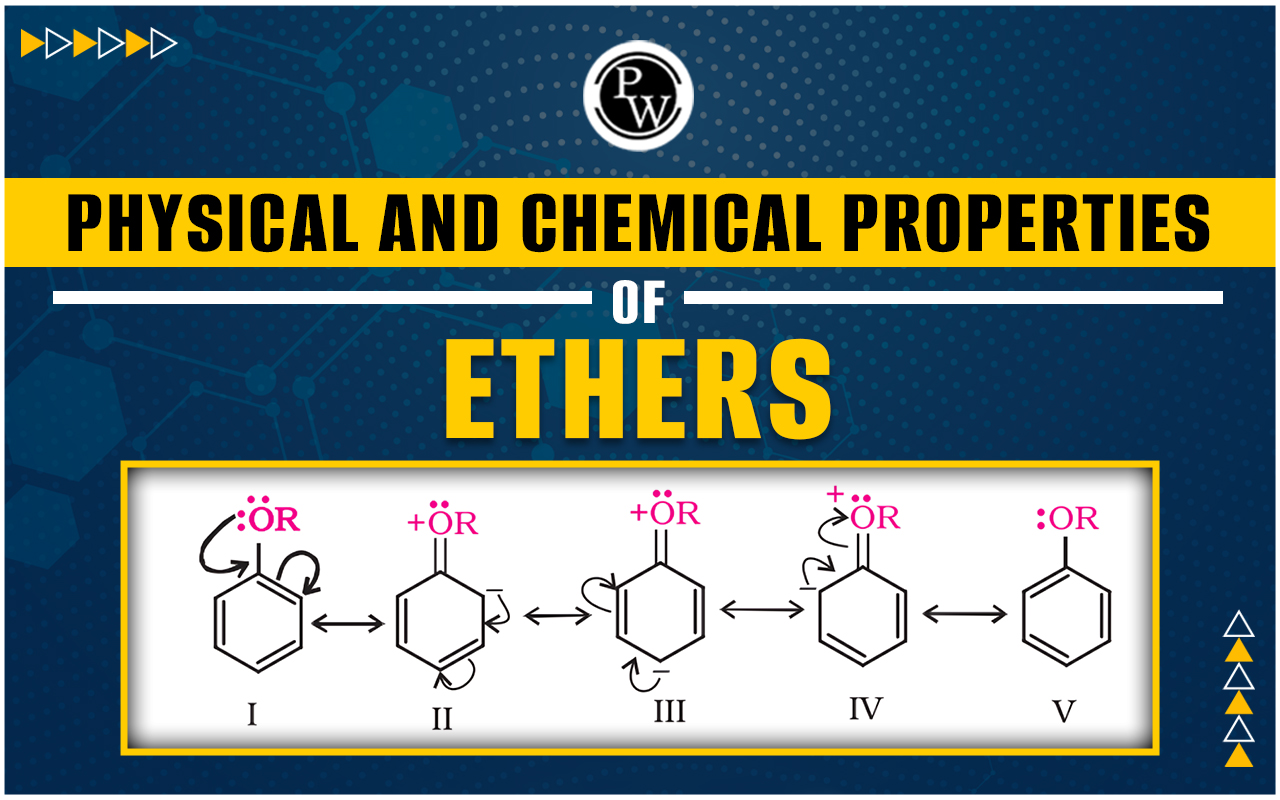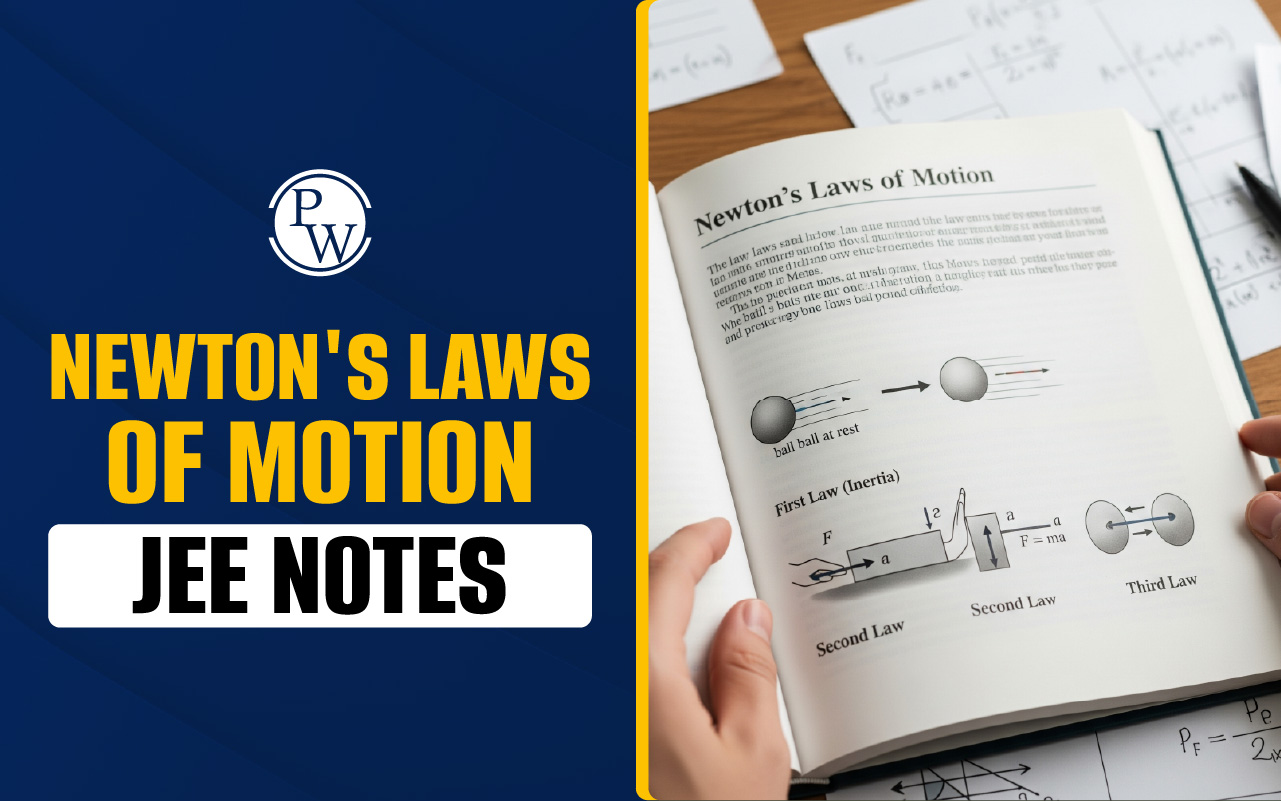

Physical And Chemical Properties Of Ethers
Physical And Chemical Properties Of Ethers : An oxygen atom bound to two different or identical alkyl or aryl groups is called an ether. For ethers, the general formula is R-O-R, R-O-Ar, or Ar-O-Ar, where R stands for an alkyl group and Ar for an aryl group.
Ethers are commonly categorized into two groups based on the substituent groups that are attached to the oxygen atom: symmetrical ethers, which have two identical groups attached, and asymmetrical ethers, which have two different groups attached.
-
Ethers are colorless, pleasant-smelling liquids at room temperature. Ethers are typically less dense and less soluble in water than alcohols.
-
Ethers are good solvents for fats, oils, waxes, perfumes, resins, dyes, gums, and hydrocarbons because they are comparatively nonreactive.
-
The polarity of C-O bonds causes an ether molecule to have a net dipole moment.
-
Hydrogen Bonding: In ethers, the oxygen and hydrogen atoms are not directly bonded. Ethers don't have hydrogen bonds between their molecules as a result. However, ethers are only utilized to accept hydrogen bonds. Due to the two lone pairs of electrons that oxygen atoms have, hydrogen can form bonds with water molecules.
-
Despite the polarity of the C-O bond, ethers have a boiling point that is similar to that of alkanes but significantly lower than that of alcohols with similar molecular masses. Alcohols and ethers are miscible in water in similar ways.
-
Ether Solubility: Ethers that contain three or more carbon atoms are miscible in water. This is due to the fact that smaller ethers can more easily form hydrogen bonds with molecules of water. The polar hydrophilic oxygen end and the nonpolar hydrophobic hydrocarbon chain are the two types of molecules that make up ethers. As the size of the alkyl group increases, ether becomes less soluble in water.
-
This is because the hydrocarbon component is non-polar, which prevents it from forming hydrogen bonds with the polar water molecules. Ethers can dissolve organic solvents reasonably well, including acetone, benzene, and alcohols. For example, n-butyl alcohol and diethyl ether both have comparable levels of water solubility. because ether and water both establish a hydrogen bond in a manner similar to that of alcohol.
-
Acidity: Because oxygen is more electronegative than carbon, ethers' alpha hydrogens are more acidic than those of simple hydrocarbons. Alpha hydrogens of carbonyl groups, like those in ketones or aldehydes, are far more acidic than these.
Chemical Properties of Ether
Chemical Properties of Ether : In comparison to complex function groups, ethers have less reactivity. Reducing and oxidizing agents, strong bases, and active metals do not affect them. Ethers are characterized chemically by the release of the C–O bond, the presence of an alkyl group, and a single pair of electrons on the oxygen atom.
Alkyl Group-Related Reactions:
Combustion : Ethers burn very easily and release carbon dioxide and water when they come into contact with air.
C 2 H 5 OC 2 H 5 + 6O 2 → 4CO 2 + 5H 2 O
Halogenation: In the absence of sunlight, the alkyl group of ether is substituted with chlorine or bromine to produce a-halogenated ethers. The order of reactivity is as follows:
HI > HBr > HCl
R–O–R + HX → RX + R–OH
When sunlight is present, all of the hydrogen atoms in ethers are replaced.Properties of Ether : Reaction Due to Oxygen
Oxonium salt formation : When ethers are dissolved in cold, strong mineral acids, such as sulfuric or hydrochloric acid, they can act as weak Lewis bases and produce oxonium salts.
Peroxide Formation
Peroxide Formation : Because ethereal oxygen has a single pair of electrons on it, when ether comes into contact with atmospheric oxygen in the presence of sunlight, it interacts with oxygen to produce ether peroxide. Ether peroxide is extremely unstable when heated and can explode violently, leading to dangerous situations. Boiling an ether sample that has been stored for a long period can be hazardous.
Properties of Ether : Reactions of Aromatic Ethers
Halogenation : Phenyl alkyl ethers experience typical halogenation in the benzene ring. Even in the absence of an iron (III) bromide catalyst, anisole conducts bromination with bromine in ethanoic acid. This reaction is brought about by the benzene ring being activated by the methoxy group. 90% of the time, the para isomer is obtained as the primary product.
Properties of Ether : Friedel-Crafts Reaction
Friedel-Crafts Reaction : Friedel-Crafts reaction occurs to aromatic ethers, such as the addition of an alkyl or acyl group when reacting with an alkyl or acyl halide in the presence of a Lewis acid catalyst.
Nitration : Anisole reacts with strong sulfuric and nitric acids to form ortho and para nitro anisole.
Physical And Chemical Properties Of Ethers FAQs
Q.1: What are the physical properties of ethers?
Q.2: Do Ethers form Hydrogen bonding?
Q.3: What are Ethers?












